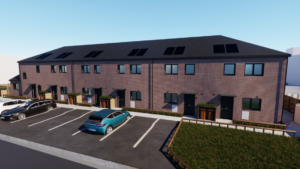Housing ladder out of reach for almost half of young adults
 The dream of owning even the cheapest local homes is now out of reach for 40% of young adults, according to new research.
The dream of owning even the cheapest local homes is now out of reach for 40% of young adults, according to new research.
Figures published by the Institute for Fiscal Studies (IFS) highlight the growing problem of rising house prices and stagnating wages for many young people.
According to the IFS, as long as they had a 10% deposit, in 1996 more than 90% of 25-to-34-year-olds would have been able to purchase a house in their area if they borrowed 4½ times their salary.
But by 2016, even with a 10% deposit, only around 60% of young adults would have been able to borrow enough to buy even one of the cheapest homes in their area.
And in London the figures are even more stark as only one-in-three young adults could borrow enough to purchase one of the cheapest homes in their local area.
Back in 1996, if they had borrowed 4½ times their salary, 90% of young adults in London could have done so.
After adjusting for inflation, the figures show average house prices in England have risen by 173% since 1997, compared with increases in young adults’ real incomes of only 19%.
Largely as a result, the share of 25- to 34-year-olds who own their own home fell from 55% to 35% between 1997 and 2017.
The research also finds that house prices differ a lot more around the country than do young adults’ incomes.
This makes it much harder for young adults in London to buy than it is for those in other parts of England. In London, 95% of young adults would need to save at least six months’ income for a 10% deposit on an average-priced home in their area. This compares with just over half in Yorkshire and the North East.
‘Big increases in house prices compared to incomes over the last two decades mean that it is increasingly difficult for young adults to get on the housing ladder, even if they do manage to save a 10% deposit,’ said IFS research economist, Polly Simpson.
‘Many young adults cannot borrow enough to buy a cheap home in their area, let alone an average-priced one. These trends have increased inequality between older and younger generations, and within the younger generation too.”
Jonathan Cribb, a senior research economist at IFS and co-author of the research, added: ‘The most economically productive and wealthiest parts of England – London and the South East – are those with the most restrictive planning constraints.
‘It is unsurprising that these areas have also experienced the biggest house price increases. Increasing the responsiveness of construction to house prices is a necessary part of the solution, particularly in these areas. Unlike other policy alternatives, this would both help reduce house prices, boost homeownership and reduce rents, benefiting renters, some of whom will never own.’















